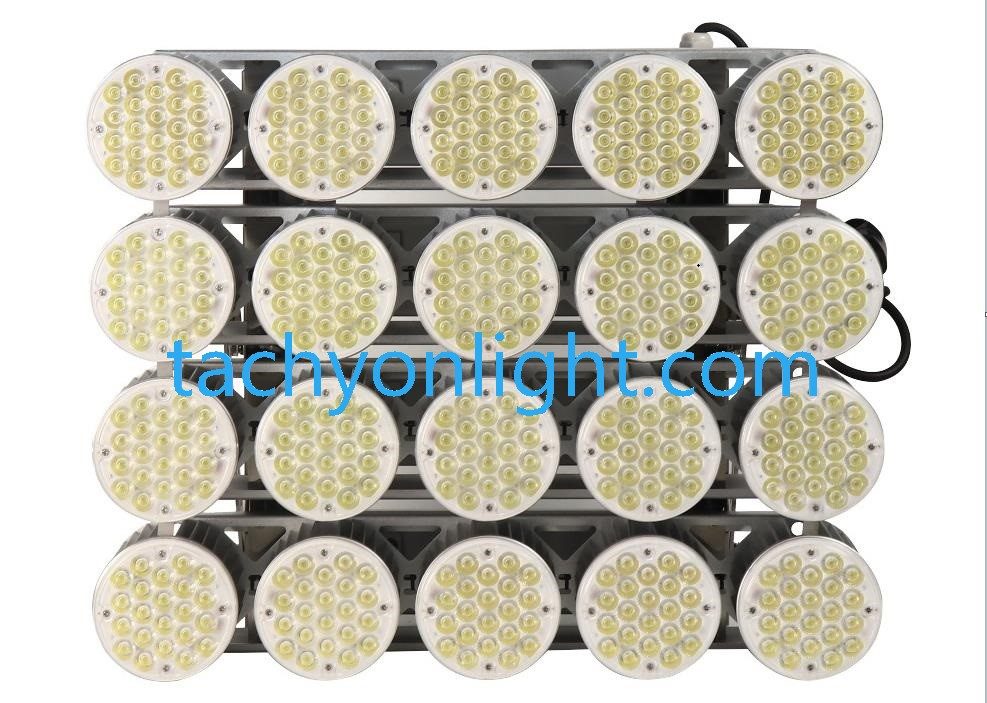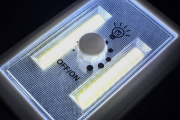LED Dimmer
The dimmer is an electrical device that changes the luminous flux of the light source in the lighting device and adjusts the illuminance level. The purpose of the dimmer is to adjust the different brightness of the light. By reducing or increasing the RMS voltage, the light output of different intensities produced by the average power lamp is promoted. Although variable voltage devices can be used for various purposes, this regulation aims to control lighting.
Types of LED Dimmers
There are three principles of LED dimmers
- Pulse Width Modulation (PWM for short) digitizes the square wave of the power supply and controls the duty cycle of the square wave to achieve the purpose of current control.
- Constant current power supply control The current can be adjusted easily with analog linear technology.
- Group control Group multiple LEDs and control them with a simple grouping device.
The above 1.2. Two methods can use adjustable resistance knob for stepless control. Due to the mature technology of PWM module, the cost is reduced. It is difficult to determine which method of flow control is used in terms of price. However, the adjustable resistor itself is not a very reliable component. Often due to the ingress of dust or the inaccuracy of the manufacturing process, there will be an instantaneous skipping fault when operating the adjustable resistor, and the light source will flash. This kind of flicker is relatively unobvious when using the PWM mode, and is more obvious when using the linear technology to regulate the current.
Regardless of how the current is adjusted, it can be changed to a tact switch (Tact Switch) or an independent grouping switch (such as a grouper, a remote control) to control the lights. This quality is more reliable and the service life is much longer. It is really necessary to use adjustable resistors for delicate lighting control. It is recommended to use high-quality adjustable resistors (usually a few yuan to a few yuan).
Whether the LED is driven by a buck, boost, buck/boost, or linear regulator, the most common thread connecting each drive circuit is to control the light output. Nowadays, only a few applications only need simple functions of on and off, and most of them need to fine-tune the brightness from 0 to 100%. Regarding luminosity control, the main two solutions are linearly adjusting the LED current (analog dimming) or switching the drive current from 0 to the target current value back and forth (digital dimming) at a high frequency that is imperceptible to the naked eye. . Using pulse width modulation (PWM) to set the cycle and duty cycle may be the easiest way to achieve digital dimming, because the same technology can be used to control most switching converters.
Introduction to dimming system
Segmented switch dimming
The ordinary light switch on the wall can realize 4-stage dimming, the first time it is turned on for full brightness, the second time it is turned on for 60% brightness, the third time it is turned on for 40% brightness, and the fourth time it is turned on for 20% brightness. The advantage of this system is that it can be dimmed using ordinary wall switches. And its power factor is as high as 0.92 or more. There is no concern about generating interference signals. The disadvantage is that it cannot be continuously dimmed. There are some troublesome operations.
Remote control dimming
Use infrared remote control to realize dimming of LED. This is of course the most ideal solution. It can realize switching lights and continuous dimming with PWM. The disadvantage is that the cost is high, there is no uniform specification, and it can only be used for high-end residential.
In fact, we should come back and think about our main purpose of dimming. All the dimming purposes mentioned above are to meet the needs of people at home with different light intensities on different occasions. For example, it may be darker when watching TV, and brighter when reading a book. Most of these are in residences. Few offices, shopping malls, factories, and schools install dimming lights. Moreover, most of these places are installed with fluorescent lamps and energy-saving lamps, and it is impossible to dimming or to achieve continuous dimming.
Epoch-making dimming for energy saving
Since mankind has realized that we must do everything possible to save energy and reduce emissions in order to solve the urgent problem of atmospheric warming, how to reduce lighting power consumption has been put on the agenda as an important issue. Because lighting electricity accounts for 20% of the total energy consumption. Fortunately, high-efficiency and energy-saving LEDs have appeared. LEDs themselves are more than 5 times more energy-efficient than incandescent lamps, and about twice as much energy as fluorescent lamps and energy-saving lamps. They are not like fluorescent lamps and energy-saving lamps.
Contains mercury. If dimming can also be used to save energy, it is also a very important energy saving means. But in the past, all light sources were not easy to achieve dimming, and easy dimming is a great advantage of LEDs. Because in many occasions there is no need to turn on the lights or at least not so bright, but the lights are turned on very bright, such as the street lights from midnight to dawn; the lights in the subway car when driving from the underground to the suburban ground; more common When the sun is shining, the fluorescent lights in offices, schools, factories, etc. near the windows are still on.
These places don’t know how much electricity is wasted every day! In the past, high-pressure sodium lamps, fluorescent lamps, ceiling lamps, and energy-saving lamps could not be dimmed at all. After switching to LEDs, the light can be dimmed freely, and the power can be completely saved. Therefore, dimming on the home wall is not the main application for lamp dimming, and the market is also small. Instead, on-demand dimming of street lamps, offices, shopping malls, schools, and factories is the more important occasion. Not only is
the market huge, but also energy-saving is considerable. What is needed in these occasions is not manual dimming but automatic dimming and intelligent dimming.
Street light dimming
Generally speaking, street lights are useless after midnight, so the usual practice is to turn off the lights or turn on half the brightness after 12 o’clock. But the most reasonable way is to control the brightness of the street lights according to the traffic flow, or even control the brightness completely adaptively.
In order to realize this kind of intelligent dimming, it is actually very simple. As long as the curve of traffic flow statistics in this area is input to a single-chip microcomputer, the PWM dimming signal is given to the constant current drive source according to this curve.
Photosensitive automatic dimming LED light
In order to reduce unnecessary lighting under strong sunlight, photosensitive auto-dimming LED fluorescent lamps (or any other LED lamps) can be used.
The function of the photosensitive element is to feel the surrounding sunlight. If the sunlight is stronger, it will output a PWM signal to all LED lamps close to the sunlight (such as LED fluorescent lamps) to dim their brightness. One dimming signal generator can adjust many LED lamps, as long as the constant current drive source of these lamps has a PWM dimming control interface. The efficiency of this dimming system itself is as high as 92%. And there is no compatibility problem with the thyristor dimming circuit on the wall. This kind of fully automatic adaptive energy-saving dimming is impossible for any gas discharge tube such as fluorescent lamps, energy-saving lamps, high-pressure sodium lamps, etc., but it is what LED lamps are best at.
Problems with LED dimming
LED lamps used to replace standard incandescent lamps usually include an LED array to ensure uniform illumination. These LEDs are connected together in series. The brightness of each LED is determined by its current. The forward voltage drop of the LED is about 3.4 V, usually between 2.8 V and 4.2 V. The LED light string should be driven by a constant current power supply, and the current must be strictly controlled to ensure a high degree of matching between adjacent LED lights.
To realize dimming, the power supply of the LED lamp must be able to analyze the variable phase angle output of the thyristor controller in order to unidirectionally adjust the constant current flowing to the LED. It is very difficult to do this while keeping the dimmer working properly, which often leads to poor performance. The problem can be manifested as slow startup speed, flickering, uneven lighting, or flickering when adjusting the brightness. In addition, there are problems such as inconsistencies between components and unwanted audio noise from LED lights. These negative conditions are usually caused by factors such as false triggering or premature turning off of the thyristor and improper LED current control. The root cause of the false trigger is the current oscillation when the SCR is turned on.
When the SCR is turned on, the AC mains voltage is almost simultaneously applied to the LC input filter of the LED lamp power supply. The voltage step applied to the inductor will cause oscillation. If the dimmer current is lower than the SCR current during oscillation, the SCR will stop conducting. The thyristor trigger circuit is charged, and then the dimmer is turned on again. This kind of irregular multiple restarts of the thyristor can make the LED light produce unwanted audio noise and flicker. A simpler design of EMI filters
can help reduce such unnecessary oscillations. To achieve successful dimming, the input EMI filter inductance and capacitance must be as small as possible.
The worst condition of oscillation is a 90-degree phase angle (at this time, the input voltage reaches the peak of the sine wave and is suddenly applied to the input end of the LED light), and it is a high input voltage (at this time, the forward current of the dimmer reaches the lowest Level). When deep dimming is required (for example, the phase angle is close to 180 degrees) and the input voltage is low, premature shutdown will occur.
To reduce the luminosity reliably, the thyristor must be turned on monotonically and stay at the point where the AC voltage almost drops to zero volts. For SCRs, the maintenance current required to maintain conduction is usually between 8 mA and 40 mA. Incandescent lamps are easier to maintain this current level, but for LED lamps that consume only 10% of the equivalent incandescent lamp, the current can be reduced to below the SCR holding current, causing the SCR to turn off prematurely. This will cause flicker and/or limit the dimmable range.
There are many other issues that pose challenges when designing LED lighting power supplies. Energy Star solid-state lighting specifications require that the minimum power factor of commercial and industrial applications must reach 0.9, lighting products must meet stringent requirements for efficiency, output current tolerance and EMI, and the power supply must be made when the LED load is short-circuited or open Safe response.
Types of Dimming Technology
In today’s LED industry, we are most optimistic about LED dimming technology and LED drive power for the time being. LED drive power is mainly oriented towards LED street lamp power supply. And this time we mainly talk about LED dimming technology. LED dimming technologies mainly include the following:
1: Thyristor dimming is a dimming technology developed in incandescent lamps. Because incandescent lamps are purely resistive loads, the use of thyristor chopping technology can smoothly achieve dimming, but it is not practical for LEDs. Dimming power supplies compatible with thyristors usually have low efficiency, and 80% is difficult to achieve. This violates the original intention of LED energy saving.
Secondly, it is difficult to achieve high power factors. Thirdly, it can only work at a single input voltage. Next, this dimming technology will inevitably die out due to the demise of incandescent lamps, but due to the high market penetration rate, it will exist for some time.
2: Linear dimming Use the dedicated dimming foot of the constant current chip to adjust the current of the LED to achieve the purpose of dimming. This kind of technology has a good effect, but the wiring is complicated, which is not conducive to fluorescent street lamps and other lighting. Many desk lamps use this method.
3: PWM dimming This method is similar to linear dimming. Together with linear dimming, it occupies most of the dimming table lamp. This PWM dimming users and customers are also very happy.
4: Remote control dimming is divided into infrared remote control and wireless remote control. It is more complicated to realize, but it can achieve effects that can not be achieved by changing color temperature, color and other dimming methods. It is mainly used for panel light dimming, and some bulb lights Adopt several dimming methods.
5: Sectional dimming. This dimming method uses the switch on the wall within a specified time to achieve the purpose of dimming. The advantage of this method is that no additional dimming components are needed. According to the existing installation method, each lamp Dimming can be achieved. On the other hand, because the dimming is completely controlled by the power switch chip, high efficiency and high power factors can be achieved within the full voltage range regardless of the brightness of the work. The disadvantage is that it can only be adjusted in advance. The set brightness cyclic adjustment cannot achieve stepless dimming, and there are few types of such ICs, and the current adjustment rate is not satisfactory, but I think that as the technology matures, IC manufacturers will definitely become more attractive. Perfect, I personally feel that this kind of dimming technology will become the mainstream of dimming technology in the future.







